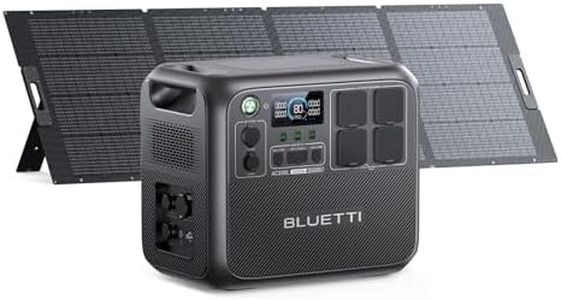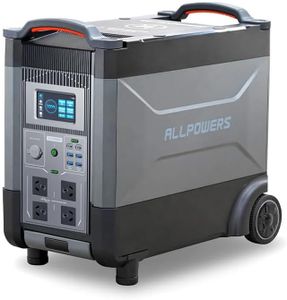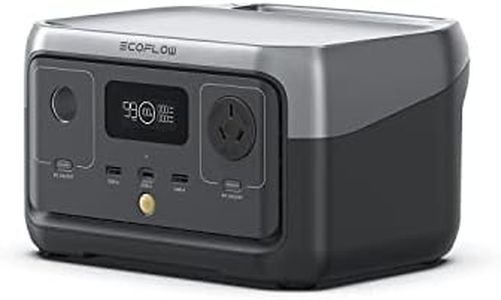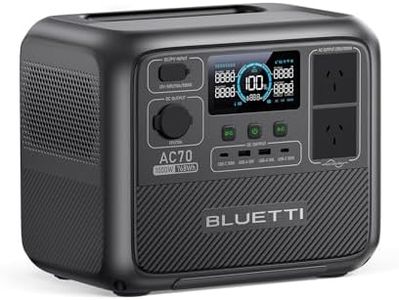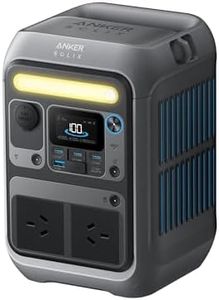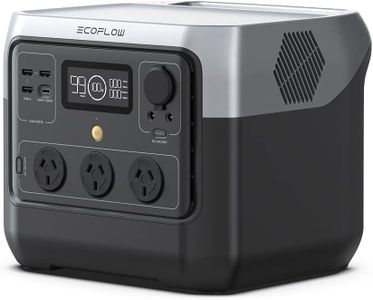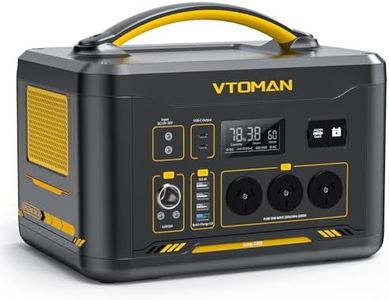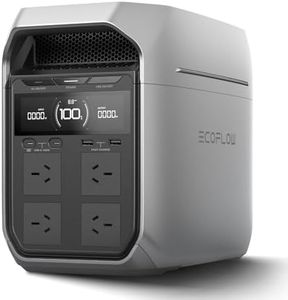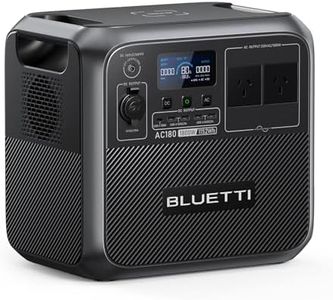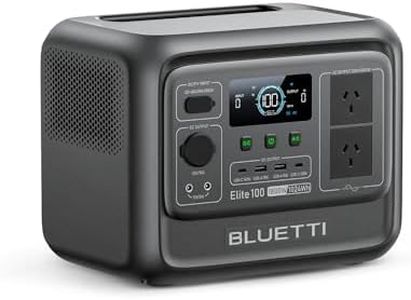We Use CookiesWe use cookies to enhance the security, performance,
functionality and for analytical and promotional activities. By continuing to browse this site you
are agreeing to our privacy policy
10 Best Portable Power Station
From leading brands and best sellers available on the web.Buying Guide for the Best Portable Power Station
Choosing a portable power station is all about making sure you have a reliable source of electricity wherever you go, whether that's camping, dealing with a power outage, or working somewhere off the grid. The main idea is to balance your actual power needs with the features and size that make sense for your lifestyle. It's important to think about what devices you want to power, how long you'll need them running, and how often you'll take the power station on the go.Battery Capacity (Wh or mAh)Battery capacity tells you how much energy the power station can store, usually shown in watt-hours (Wh) or milliamp-hours (mAh). It's important because it directly affects how long you can run or charge your devices. Lower capacity models (under 300Wh) are good for small devices like phones and lights. Mid-range ones (300Wh–700Wh) can handle laptops, cameras, and even small fans. High capacity units (over 700Wh) can keep larger devices or small appliances powered for longer periods. You should pick capacity based on the type and number of devices you need to run, and for how long—so count up your device needs and match the battery size accordingly.
Output Ports and TypesOutput ports come in various types, such as USB, AC, or DC sockets, and they decide what devices you can connect at one time. More (and more varied) ports mean you can charge or power more things at once—like phones, laptops, and even small household appliances. If you only need to charge phones and tablets, mostly USB ports are fine. For laptops or things that need a typical wall plug, you'll want AC sockets. Some models also offer car-style 12V outputs for certain devices. Think about what you plan to plug in, and make sure the power station has enough of the right kind of ports.
Power Output (Watts)Power output, measured in watts, tells you the maximum amount of electricity the power station can produce at one time. This is crucial because if you plug in devices that together need more power than the station can deliver, it won't work properly. Lower-wattage models (under 200W) are suitable for gadgets and LED lights, while higher-wattage ones (200W–1000W) can run power-hungry tools, laptops, or small appliances. Make a list of the most power-hungry device you’ll use and make sure your power station can handle it, plus a bit extra for safety.
Charging OptionsCharging options refer to how you recharge the power station itself—often through a wall socket, car charger, or solar panels. Some models recharge faster or allow more flexibility with these sources. If quick recovery is important, look for fast wall or car charging. For outdoor use, solar panel compatibility lets you stay independent for longer. Consider where and how often you’ll be able to recharge, and pick a model that fits your typical usage situation.
Size and WeightSize and weight matter if you plan to carry your power station around—for camping, travel, or outdoor events. Lightweight, compact models are easy to move but tend to have smaller batteries and less power. Larger ones offer more capacity and output but can be heavy. Choose a size you can comfortably transport to where you’ll use it, balancing portability against the power features you need.
Display and ControlsThe display and controls help you understand status like battery life, input/output usage, or even charging time remaining. Clear displays make it easy to know how much power you have left and manage your usage better. Simple controls mean anyone can operate it. If you prefer to monitor things easily, or plan to use your power station in emergencies, easy-to-read displays and straightforward controls are important.
Safety FeaturesSafety features can include things like overcharge protection, temperature control, and short-circuit prevention. These are important because they keep your devices and the power station itself safe from damage. Better models have more advanced features to prevent accidents. If you plan to leave the power station running unattended, charge expensive devices, or use it indoors, prioritize a unit with strong safety features.

